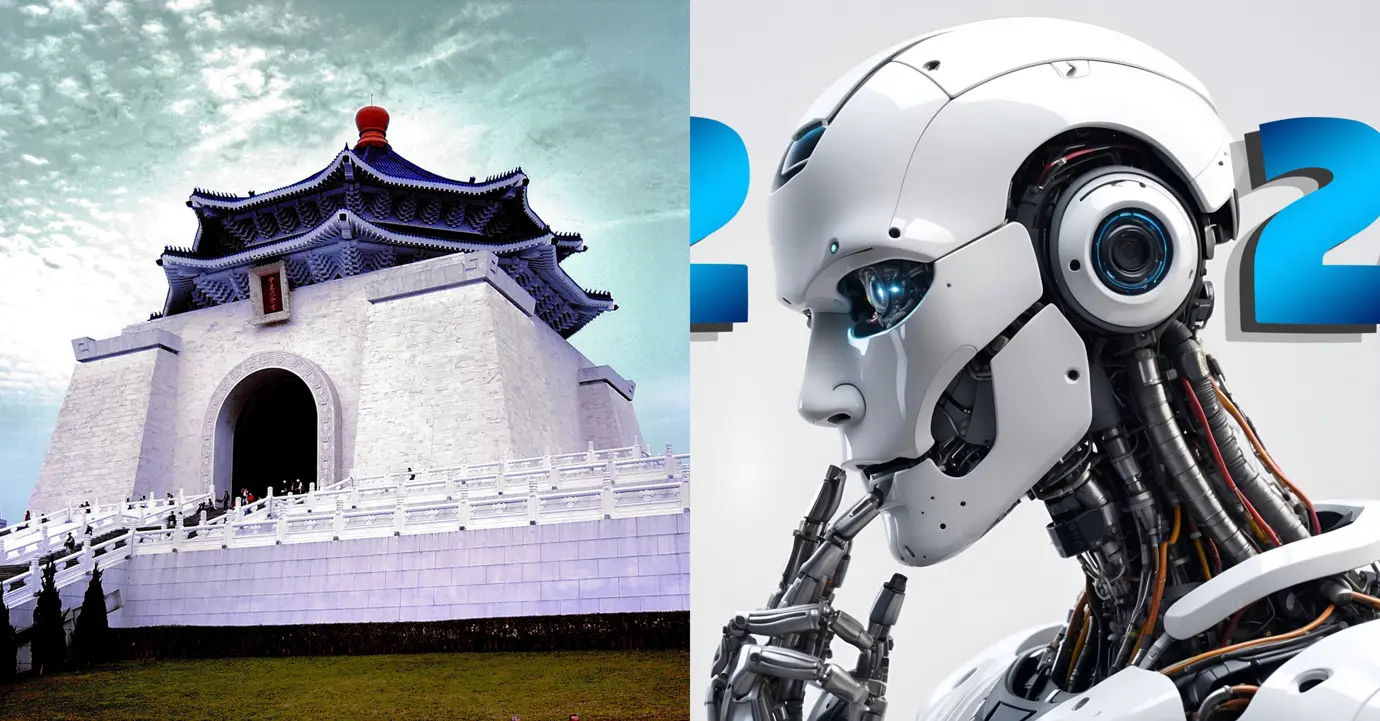The Third Party in Taiwan &
Unexpected U.S.–China Collaborations†
Table of Contents
Estimated Reading Time
- 6 min

Gerd Altmann, Robot (Publicdomainpictures.net)
Update #1: Taiwan’s Future & Third Party

LAI Ching-te of the Democratic Progressive Party (“DPP”), which rejects China’s territorial claims over Taiwan, won last Saturday’s election to lead Taiwan in the coming four years, thereby solidifying the DPP’s position as the ruling party for the near future. Yet, it was KO Wen-je of the Taiwan People’s Party (“TPP”), the third party of Taiwan, who won an influential position that may empower him to have important dialogues with Beijing.
“Dialogues between KO and Beijing could set a foundation for resolving the stalemate that Taipei and Beijing have faced since 1949 […].”
Dialogues between KO and Beijing could set a foundation for resolving the stalemate that Taipei and Beijing have faced since 1949, when the Nationalist Party (aka Kuomintang (“KMT”)) lost its civil war with the Chinese Communist Party and moved to Taiwan to continue its governance under CHIANG Kai-shek and his successors for many decades. Because HOU Yu-ih of the KMT also failed to win last Saturday’s election, the party remains Taiwan’s largest opposition party.
Worth noting:
Largely due to voters’ frustration with the DPP’s failure to address the high cost of housing and other economic challenges during its eight-year governance, Lai (DPP) only won 40% of the vote, while Hou (KMT) and Ko (TPP) gained 33.5% and 26.5% of the vote, respectively. In addition, the DPP lost its majority in the legislature and the legislature’s 113 seats are now split between the KMT (52 seats), DPP (51 seats), TPP (8 seats), and 2 independents who are ideologically in line with the KMT.
Because no party has an absolute majority in the legislature, the TPP will be in the position to use its eight seats to influence Taiwan’s governance. Also, Ko’s 26.5% of the vote is mainly attributed to his success in seeking middle ground between the KMT and DPP, as the former is perceived by many voters as being too close to Beijing while the latter is considered too provocative. Ko’s pragmatic approach to primarily address economic issues, especially inadequate job opportunities and the lack of affordable housing for young people, has made him popular among Taiwan’s youth.
Such popularity, together with his party’s influential position, bodes well for Ko, as he is now empowered to develop meaningful dialogues with Beijing. Ko has called for patience in dealing with Beijing. Specifically, he explained last October his bottom line for having dialogues with Beijing: that Taiwan’s democratic political system and way of life shall remain unchanged. With respect to Beijing’s offer of governing Taiwan under the “one country, two systems” model that is similar to the model currently used in Hong Kong, Ko urged Beijing to define what “one China” means. Ko added, “[w]e will not deny that Taiwan is part of the Chinese culture circle […and] we share the same history, language, religion and culture”. While saying “politically, at this moment, there’s nothing we can do,” Ko does see Taiwan’s economic cooperation with China as negotiable.
Ko’s recognition of the foundational and cultural roots shared by the two lands across the Taiwan Strait and his emphasis on economic cooperation are likely to appeal to Beijing, amidst its need to improve the economy and its wish to avoid crises. In mid-December 2023, President XI Jinping met with other top Chinese leaders to decide priorities for the country’s plans for the economy in 2024. “Stability” is essentially an overarching theme of all economic tasks, as the leaders called for efforts to “pursue progress while ensuring stability” and to “consolidate stability through progress”.
If a Xi-Ko meeting occurs in 2024, it will be the highlight of 2024 and will help shape the development of the political landscape not only across the Taiwan Strait but also in Asia.
Update #2: Unexpected U.S.–China High-Tech Collaborations

The year 2024 marks the 45th anniversary of the establishment of diplomatic ties between the United States and China. President Joe Biden and President Xi have sent each other letters to celebrate this historic achievement. Moving forward, will the two countries be able to follow the friendly spirit prevailing at the November 2023 Biden-Xi summit to forge more amicable relations?
The 17th U.S.-PRC Defense Policy Coordination Talks held at the Pentagon in early January 2024 are encouraging. The U.S. and Chinese sides were respectively led by Dr. Michael Chase, Deputy Assistant Secretary of Defense for China, Taiwan, and Mongolia, and Major General SONG Yanchao, Deputy Director of the Central Military Commission Office for International Military Cooperation. The two sides discussed, among other issues, U.S.-PRC defense relations as well as regional and global security issues. While reiterating the United States’s commitment to the “one China” policy, Dr. Chase emphasized the need to maintain military-to-military communications to “prevent competition from veering into conflict”.
Shortly afterwards, Senior Colonel ZHANG Xiaogang, spokesperson for China’s Ministry of National Defense, also welcomed exchanges and cooperation with the U.S. military. In addition, he specified China’s expectations: that the U.S. side will “develop a right perception of China” and will “respect the core interests and major concerns of the Chinese side”.
Worth noting:
“Two recent reports highlighting little known U.S.-China high-tech collaborations evoke optimism that the two countries may be able to accomplish more together this year.”
U.S.-China relations seem like they are off to a good start in 2024. Two recent reports highlighting little known U.S.-China high-tech collaborations evoke optimism that the two countries may be able to accomplish more together this year.
The first report discusses a scientific breakthrough accomplished by researchers from China’s Tianjin University and the United States’s Georgia Institute of Technology. The teams jointly created the first functional graphene semiconductor in the world. Semiconductors made from graphene are expected to be speedier than those made from silicone and are, therefore, capable of supporting the development of more advanced electronic devices. The researchers’ article is published in Nature, the leading multidisciplinary science journal.
The second report concerns confidential discussions conducted between artificial intelligence (“AI”) scientists and policy experts from the United States (e.g., OpenAI and Anthropic) and China (e.g., Tsinghua University and institutions with strong affiliations with the government) in Geneva last July and October. The discussions reportedly focused on the risks associated with the widespread deployment of AI technologies and potential U.S.-China collaborative efforts to ensure that AI can be developed safely.
These collaborations will hopefully bring the United States and China closer so that their understanding of each other allows them to tackle more global challenges together.
† The citation of this article is: The Editorial Board of SINOTALKS®, The Third Party in Taiwan & Unexpected U.S.-China Collaborations, SINOTALKS.COM®, SinoExpress™, Jan. 17, 2024, https://sinotalks.com/sinoexpress/taiwan-ai-collaboration.



